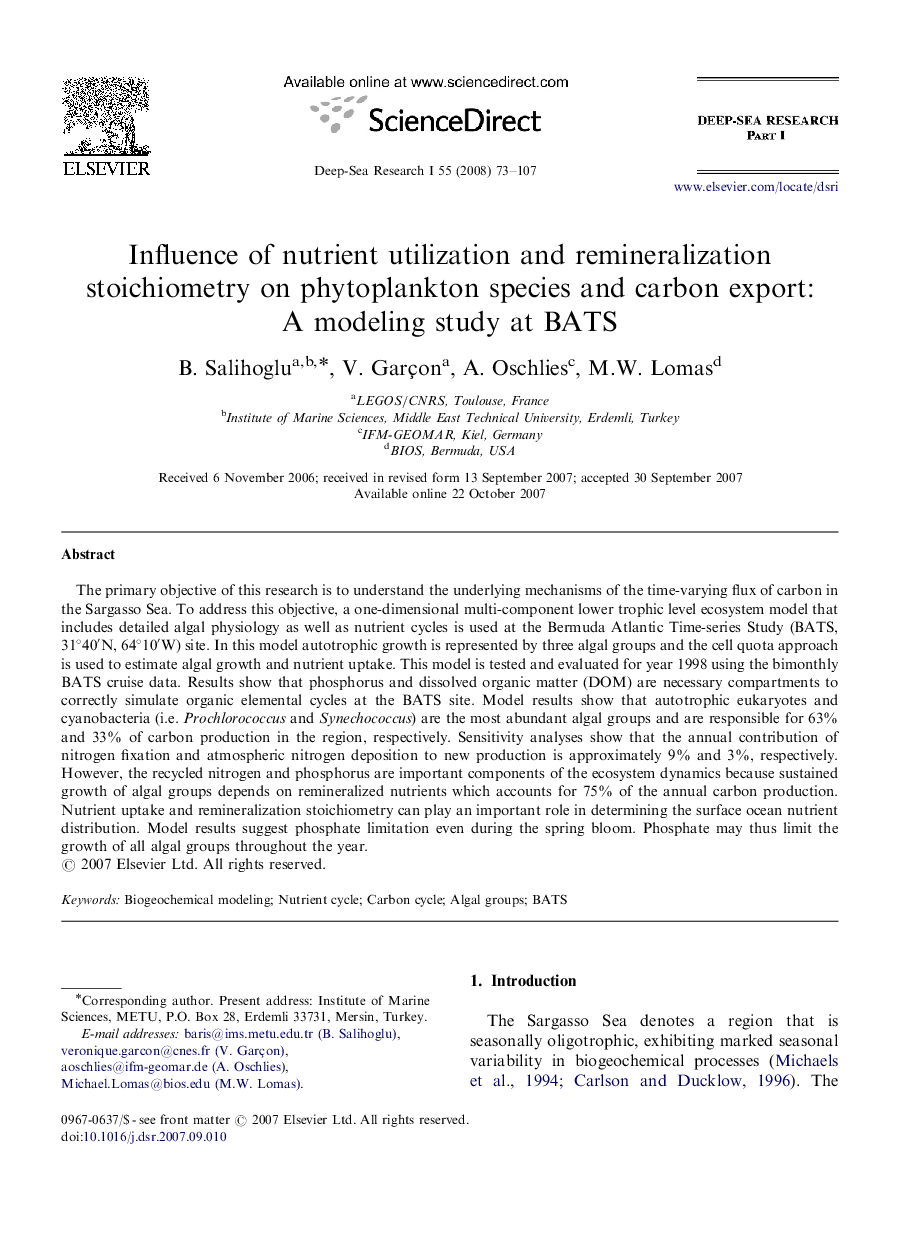| Article ID | Journal | Published Year | Pages | File Type |
|---|---|---|---|---|
| 4535348 | Deep Sea Research Part I: Oceanographic Research Papers | 2008 | 35 Pages |
The primary objective of this research is to understand the underlying mechanisms of the time-varying flux of carbon in the Sargasso Sea. To address this objective, a one-dimensional multi-component lower trophic level ecosystem model that includes detailed algal physiology as well as nutrient cycles is used at the Bermuda Atlantic Time-series Study (BATS, 31∘40′N31∘40′N, 64∘10′W64∘10′W) site. In this model autotrophic growth is represented by three algal groups and the cell quota approach is used to estimate algal growth and nutrient uptake. This model is tested and evaluated for year 1998 using the bimonthly BATS cruise data. Results show that phosphorus and dissolved organic matter (DOM) are necessary compartments to correctly simulate organic elemental cycles at the BATS site. Model results show that autotrophic eukaryotes and cyanobacteria (i.e. Prochlorococcus and Synechococcus) are the most abundant algal groups and are responsible for 63% and 33% of carbon production in the region, respectively. Sensitivity analyses show that the annual contribution of nitrogen fixation and atmospheric nitrogen deposition to new production is approximately 9% and 3%, respectively. However, the recycled nitrogen and phosphorus are important components of the ecosystem dynamics because sustained growth of algal groups depends on remineralized nutrients which accounts for 75% of the annual carbon production. Nutrient uptake and remineralization stoichiometry can play an important role in determining the surface ocean nutrient distribution. Model results suggest phosphate limitation even during the spring bloom. Phosphate may thus limit the growth of all algal groups throughout the year.
